Based between Los Angeles and Accra, Kenturah Davis works across drawing, textiles, sculpture, and performance, employing portraiture and printmaking techniques to investigate themes of language, movement, and identity. Her work is a study in motion: a layered, dimensional space found within the seemingly flat surfaces of a page.
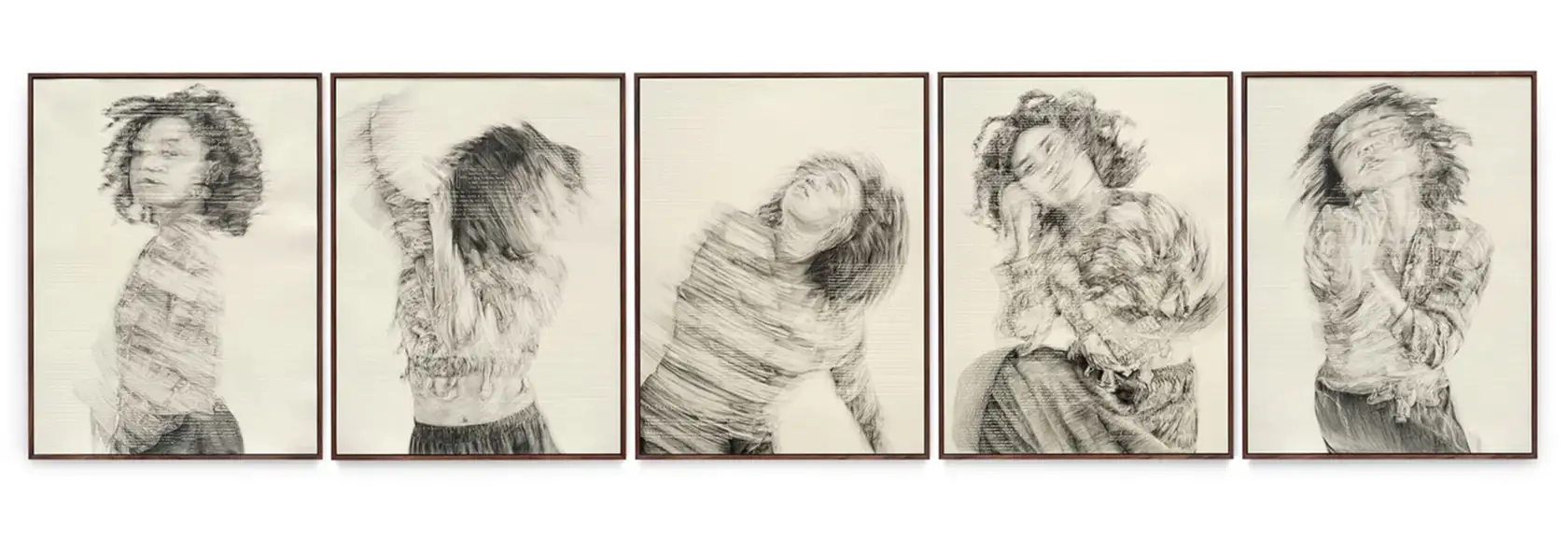
planar vessel XXIX (marcella), 2024 by Kenturah Davis.
Carbon pencil rubbing and debossed text on igarashi kozo paper. Courtesy of the artist and Stephen Friedman Gallery, London and New York, and Matthew Brown, Los Angeles.
Text is a starting point in Davis’s practice. Across media, she explores the role language plays in forming identity, as well as shaping one’s perception of the world around them. This enquiry runs throughout the LYRA collection, where, alongside Davis, artists such as Jenny Holzer and Barbara Kruger harness the power of language to resist political and societal prejudice, one embedded in everyday life through the very language we use to critique it. Working with either her own writing or existing texts, Davis entwines language and imagery to create portraits of people caught mid-movement.
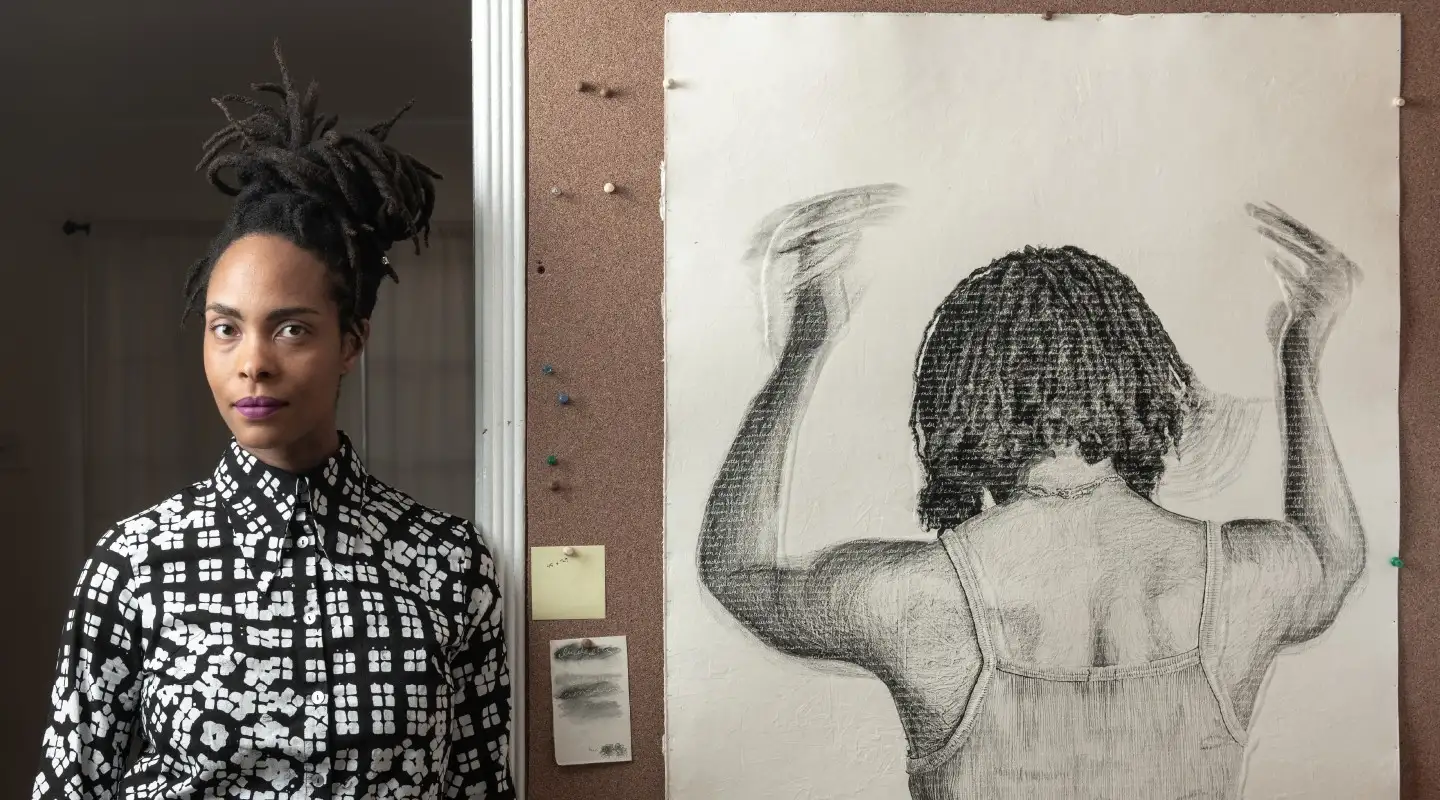
Kenturah Davis, portrait.
Courtesy of the artist.
Davis’s writing draws inspiration from a wide range of sources, conceptualising a plurality of vantage points through which to perceive her subject matter: literature, dance, musical notation, theoretical physics, the African diaspora, the artist’s lived experience. The history of writing – particularly Egyptian and Mesopotamian traditions – informs the artist’s methodologies, such as overlapping words in pencil to form imagery, or the blind debossing technique of imprinting text onto Japanese kozo paper. Working in both monochrome and colour palettes, she further incorporates techniques, such as shifu weaving and pigment print. In the tradition of semiotics, yet through a distinct and personal lens, Davis investigates the relationship between meaning, figuration, and language through the drawn and woven line that captures the body’s movement.
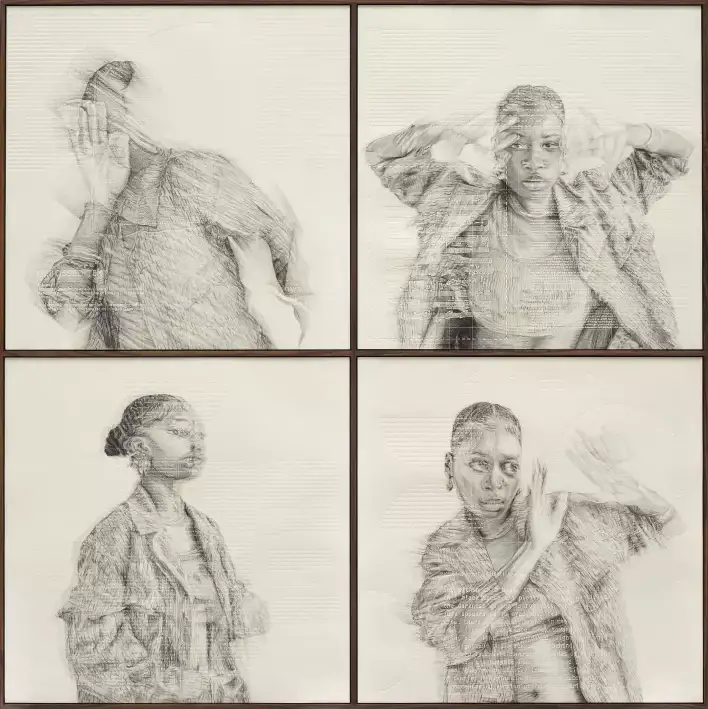
planar vessel XXVIII (jada), 2024 by Kenturah Davis.
Carbon pencil rubbing and debossed text on igarashi kozo paper, Lyra Collection. Courtesy, Lyra Collection.
In her portraiture series – among which is planar vessel XXVIII (jada) (2024), a work we are proud to hold in our collection – the primary source is an essay written by Davis. This essay encapsulates her exploration of how language shapes human perception and echoes the voices of figures such as choreographer Katherine Dunham, who intersected dance with anthropology, showing how the body can become a vehicle for radicality that cuts through societal conceptions of space and time. Alongside Dunham, Davis references the careers and legacies of composer Florence B. Price – the first Black female musician to compose for a national symphony orchestra – as well as theorist Saidiya Hartman, author Toni Morrison, and physicist Carlo Rovelli.
Movement plays a central role in Davis’s practice. Often working from long-exposure photographs of family, friends, and dancers, the artist captures motion through layered applications of graphite over embossed text. Her work reflects on the complexity of human encounters, highlighting the multiplicity inherent in identity and experience. For Davis, nothing is singular: there are always, and always will be, multiple ways of seeing, encountering, and engaging. Her intimate portraits affirm that Black identity is never monolithic, that movement is all-encompassing and ever-present. In her work, movement becomes evidence of human selves and bodies in constant flux, just as language shifts in relation to context.
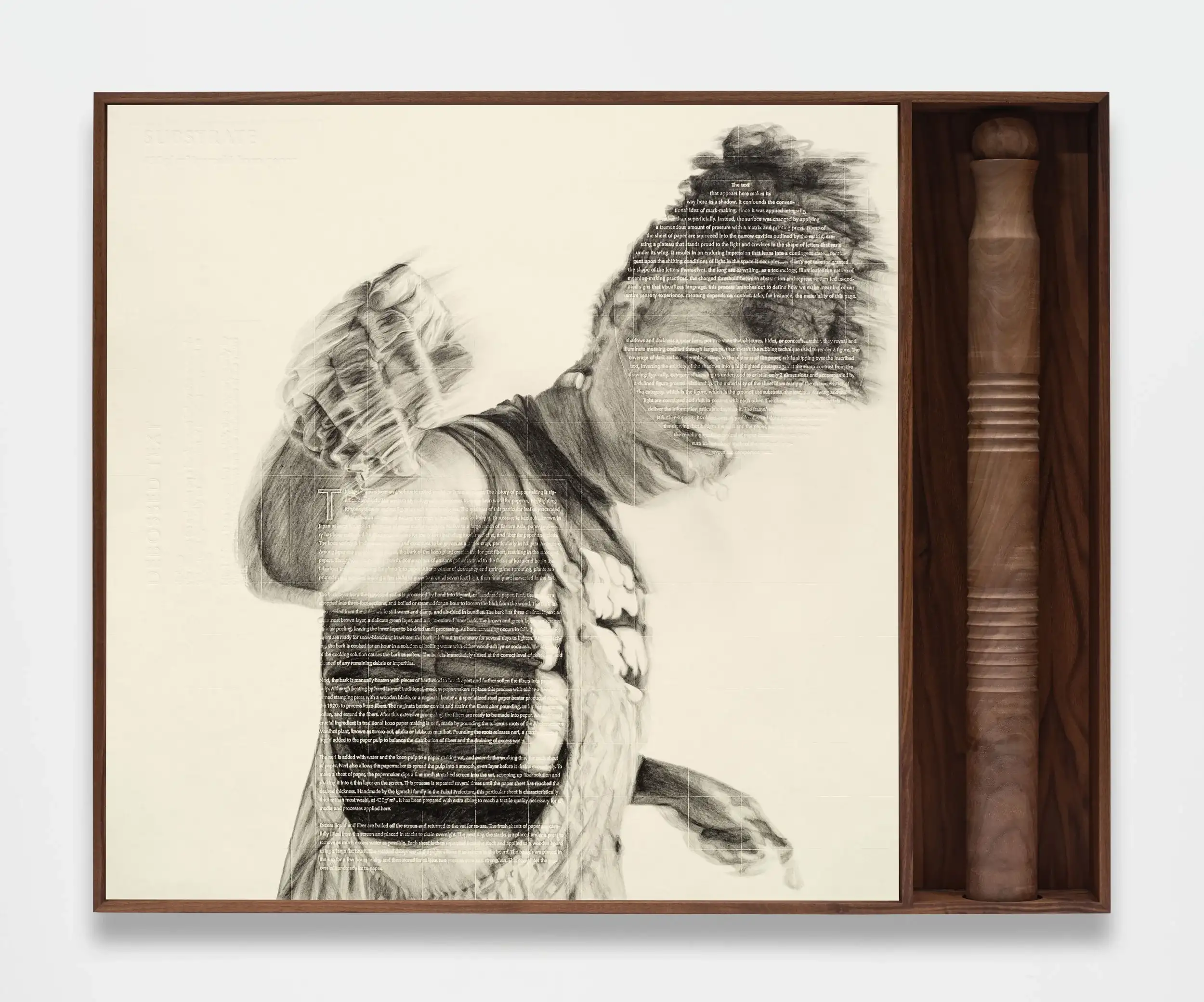
volume II (marjani), 2024 by Kenturah Davis.
Carbon pencil rubbing and debossed text on igarashi kozo paper with a walnut vessel in a walnut frame. Courtesy of the artist and Stephen Friedman Gallery, London and New York, and Matthew Brown, Los Angeles.
Davis approaches her work, both in terms of their materiality and subject matter, as vessels of information, just as we ourselves and our bodies are containers of knowledge and experience. This idea is extended in the artist’s careful framing of her drawings and woven pieces. Sculptural elements – made from wood such as ebony from Ghana, where the artist lived for many years, and ash from a tree at her home in Los Angeles – compose multi-dimensional artworks in which every material, dimension and form holds meaning.
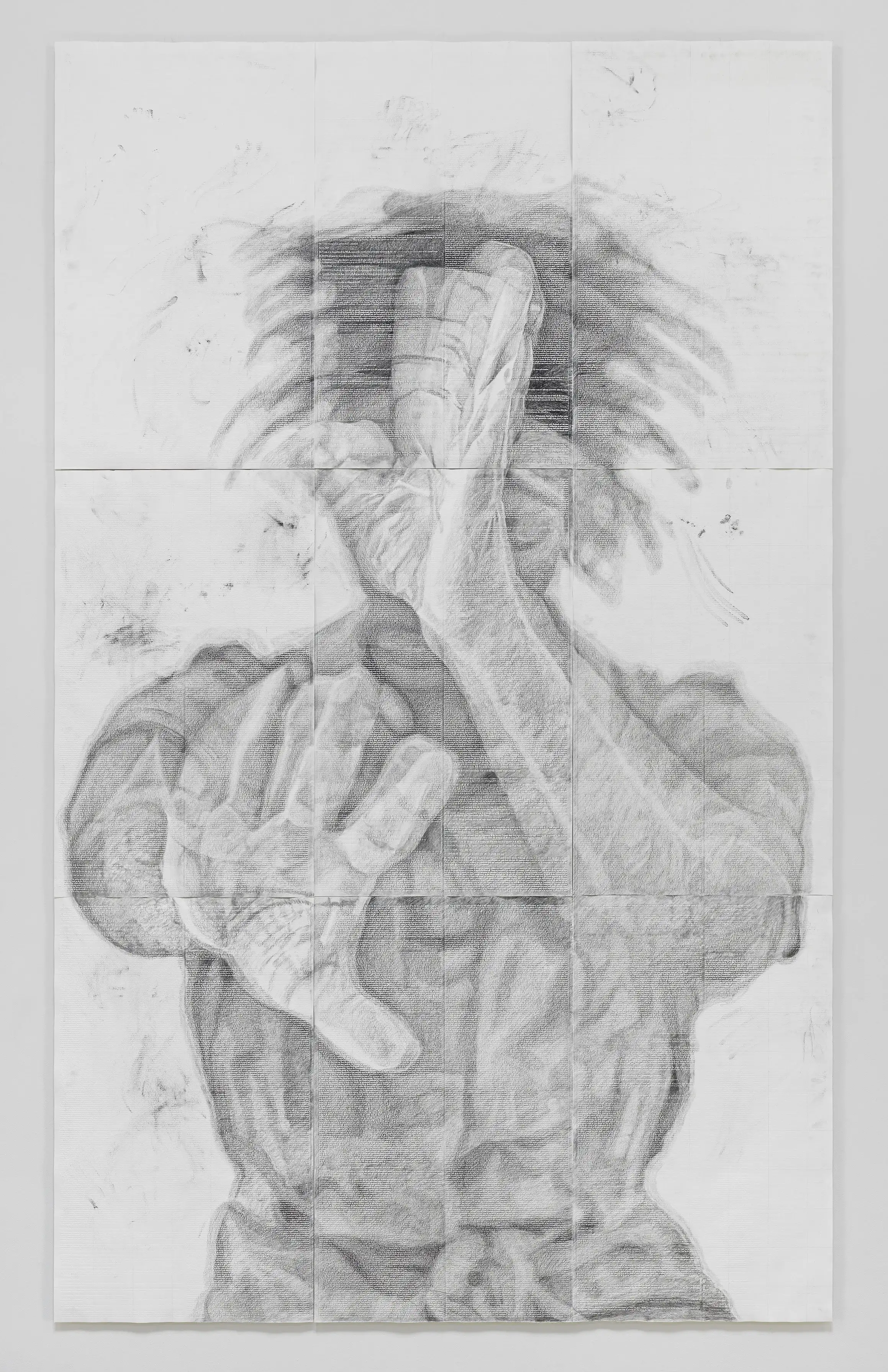
Contending with Contingency I, 2021, by Kenturah Davis.
Carbon pencil, pencil, and blind debossing on nine sheets of paper. Courtesy of MoMA, Gift of Pamela and David Hornik.
Davis often reverts to grid-like structures, as seen in Contending with Contingency (2021), which is on display at the Museum of Modern Art’s permanent collection in New York. Here, nine sheets of paper together form a figure caught in motion. Upon closer look, the paper reveals embossed transcripts from the U.S. Senate’s 1864 debate on the 13th Amendment, which ultimately abolished slavery. The artist impressed the text into paper without using ink, producing a textured surface. The words become legible where they intersect with the figure of a choreographer whose image is rendered by rubbing a carbon pencil over the text. Caught mid-movement, the image reveals the words that visibly constitute the dancer’s body. The work speaks to the condition of freedom held within the structures of language. To borrow Davis’ words: “The implications of this language are activated through our bodies.”
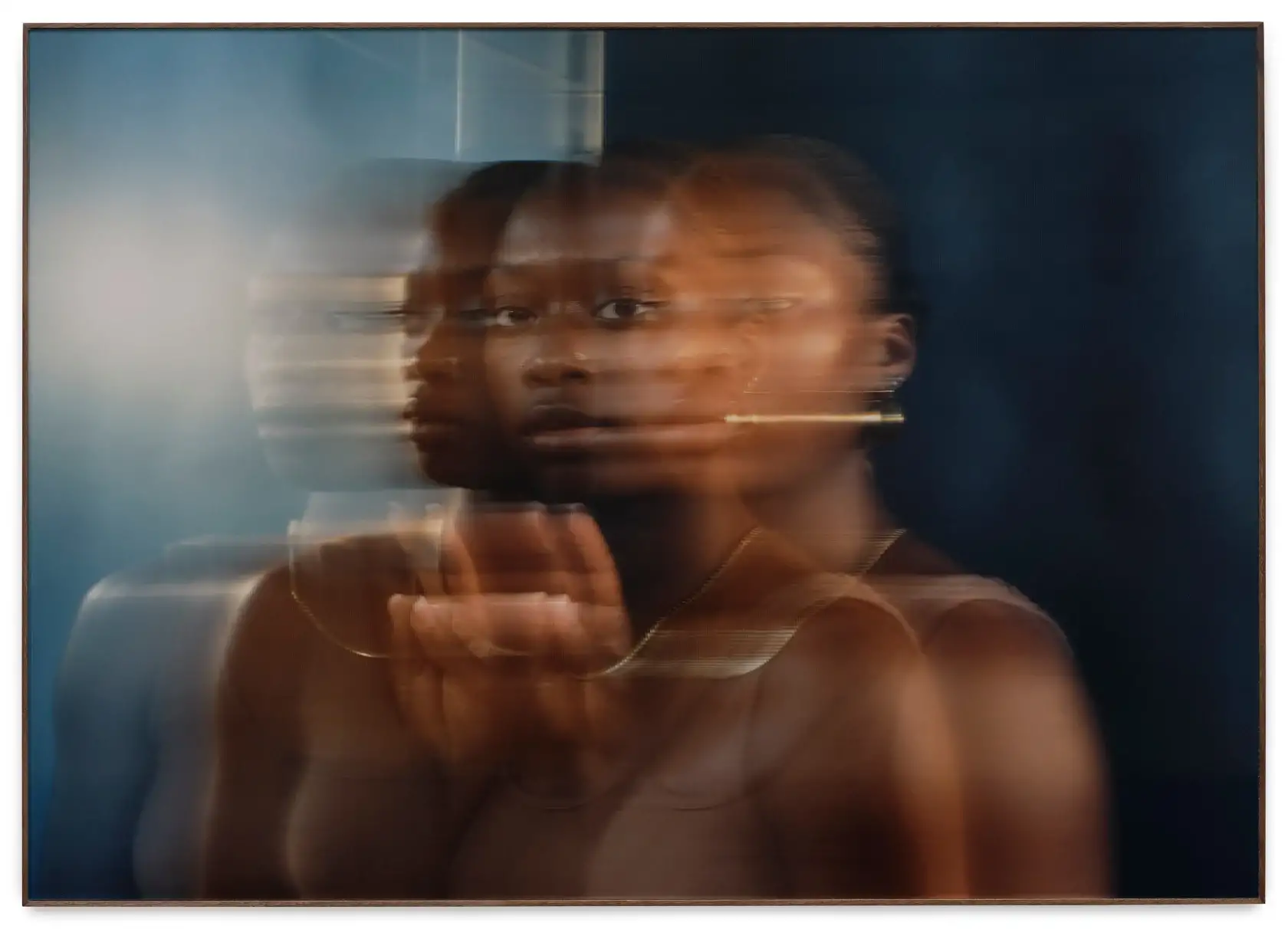
duration I (jada), 2024 by Kenturah Davis.
Archival pigment print, 3D lenticular lens, walnut frame. Courtesy of the artist.
Investigation into artistic discourse surrounding the subject of the body is another pillar in the LYRA collection, foregrounding artists who explore embodiment as a site of meaning, resistance, identity, and transformation. In her process, Davis often begins with taking long-exposure photographs of dancers and choreographers she invites into her studio to improvise movement. The swirls and flows of these images serve as the basis for her pencil drawings, which she fuses with text imprinted onto paper. The relationship between the text and the material is integral to shaping the interplays of visibility, legibility, and perception that remain in flux throughout Davis’s practice.
The push and pull of invisible writing made visible through the image suggests that reality is not a singular phenomenon. History, language, and time imprint themselves upon the ever-layered human experience. From a distance, Davis’s figures appear resolved and contained in their fluid figuration. The text only becomes legible upon close inspection, and under specific lighting conditions in the exhibition space, an experience that references the constructed nature of human perception. The artist here calls for slowness: the closer we are to the work, the more the image dissolves, yet the emerging text demands attention. Davis creates moments of encounter that ultimately speak to how everything is always expanding, vibrating with life.